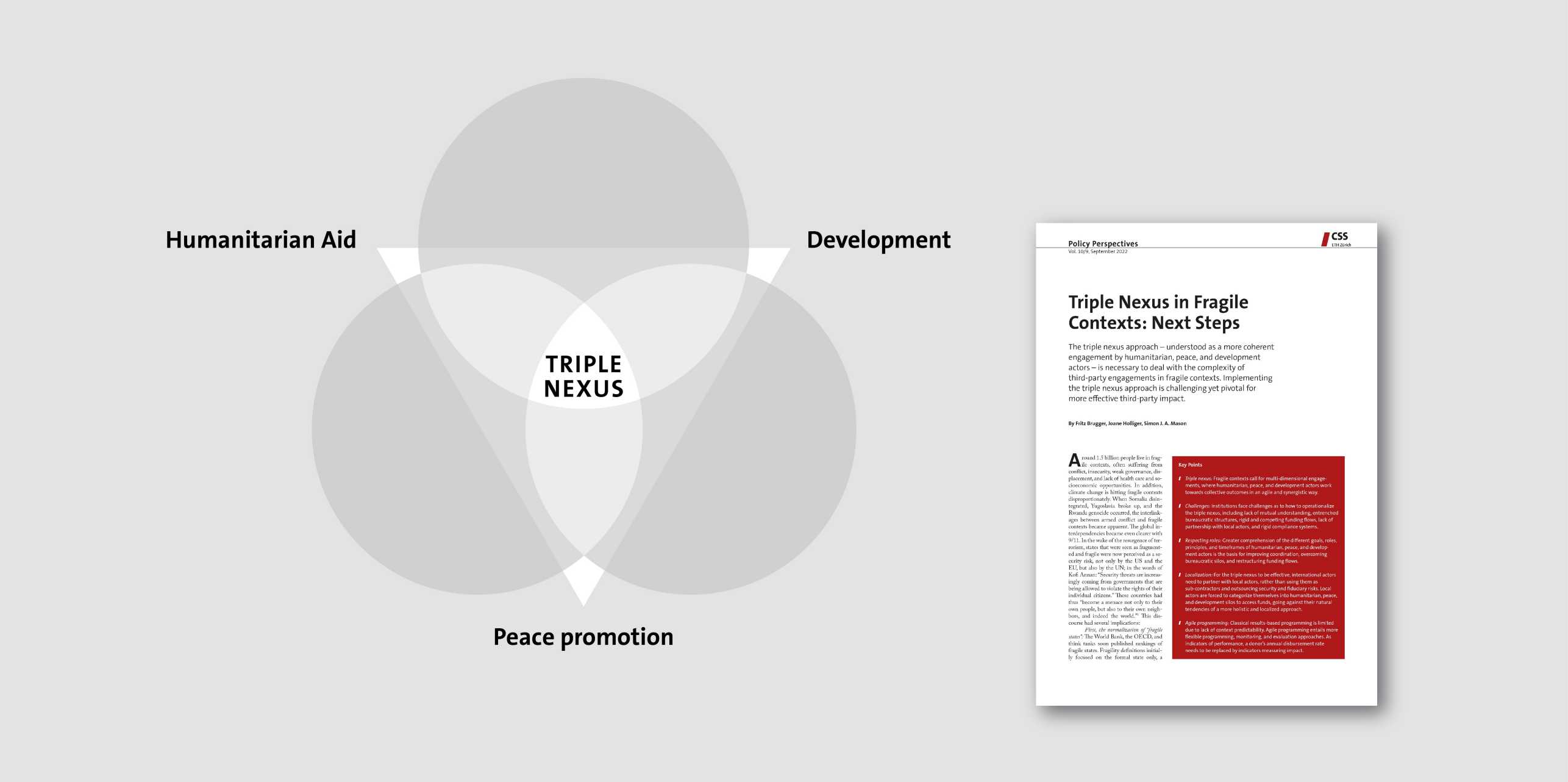Triple Nexus in Fragile Contexts: Next Steps
The triple nexus approach – understood as a more coherent engagement by humanitarian, peace, and development actors – is necessary to deal with the complexity of third-party engagements in fragile contexts. Implementing the triple nexus approach is challenging yet pivotal for more effective third-party impact, argue Fritz Brugger, Joane Holliger and Simon J. A. Mason in this CSS Policy Perspective.

Key Points
Triple nexus: Fragile contexts call for multi-dimensional engagements, where humanitarian, peace, and development actors work towards collective outcomes in an agile and synergistic way.
Challenges: Institutions face challenges as to how to operationalize the triple nexus, including lack of mutual understanding, entrenched bureaucratic structures, rigid and competing funding flows, lack of partnership with local actors, and rigid compliance systems.
Respecting roles: Greater comprehension of the different goals, roles, principles, and timeframes of humanitarian, peace, and development actors is the basis for improving coordination, overcoming bureaucratic silos, and restructuring funding flows.
Localization: For the triple nexus to be effective, international actors need to partner with local actors, rather than using them as sub-contractors and outsourcing security and fiduciary risks. Local actors are forced to categorize themselves into humanitarian, peace, and development silos to access funds, going against their natural tendencies of a more holistic and localized approach.
Agile programming: Classical results-based programming is limited due to lack of context predictability. Agile programming entails more flexible programming, monitoring, and evaluation approaches. As indicators of performance, a donor’s annual disbursement rate needs to be replaced by indicators measuring impact.